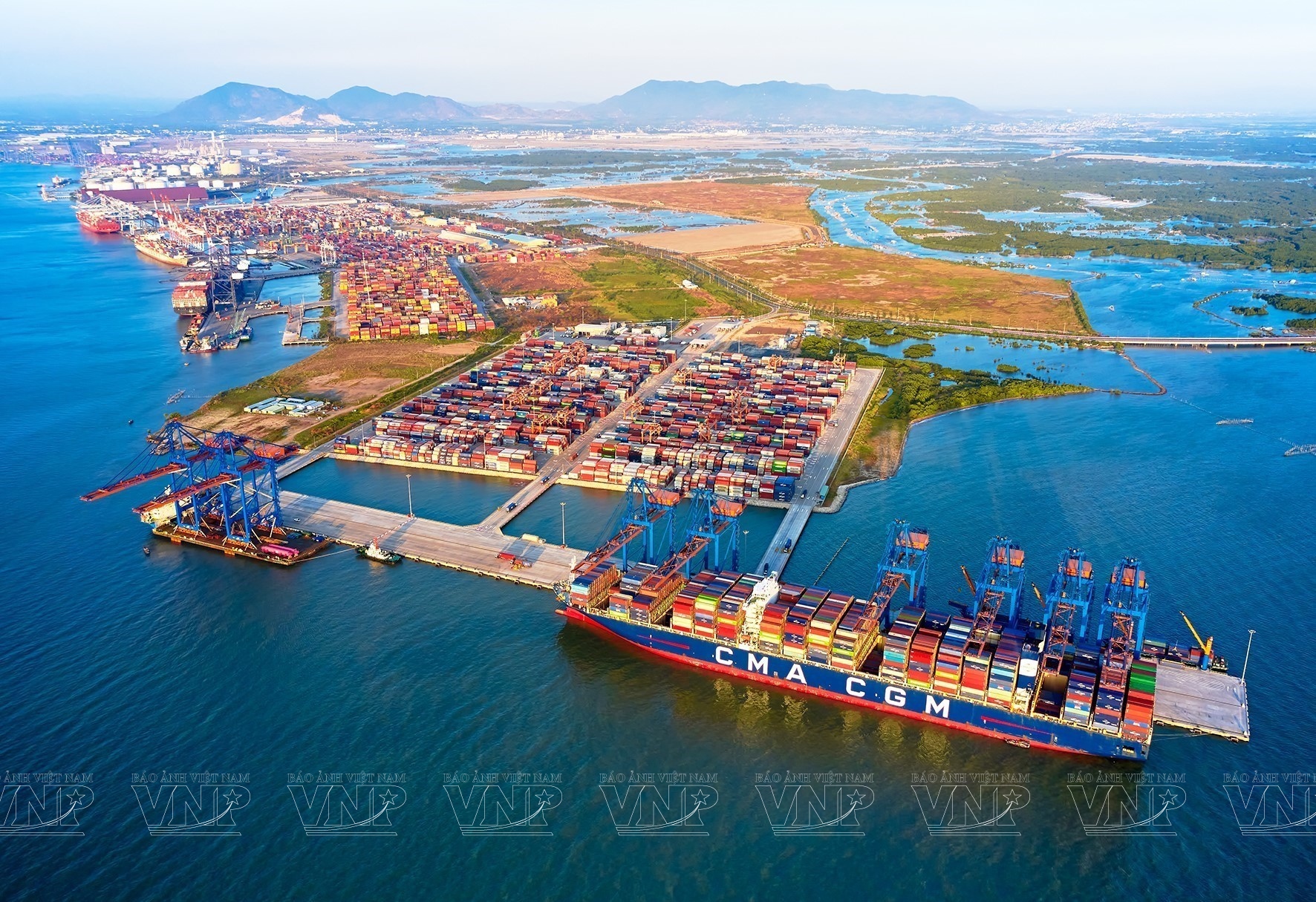Vietnam's seaports strive to keep up with global green trend

Hanoi, January 26 (VNA) – Seaports serve as important gateways for goods and services to reach the world, but they are also one of the main causes of environmental pollution. Therefore, greening seaports to balance environmental protection and economic development is now a trend in many countries, including Vietnam.
Benefits from green seaports
The Vietnam Maritime Administration has announced basic criteria for green seaports so that businesses can devise their own transition roadmaps and adopt a new mindset about port operations. This is an important foundation for businesses to start the process of greening seaports.
According to the administration’s criteria, to be recognised as a green, a port must satisfy many standards, including the use of renewable energy sources such as wind and solar power, liquefied natural gas, hydrogen, and ammonia. It also needs to use every-saving equipment and technology, optimise operations, and apply online payment and e-document processing.
Taking the lead in grasping the green trend, Tan Cang - Cat Lai Terminal in Ho Chi Minh City was the first in Vietnam to be granted the Green Port Award by the Asia-Pacific Economic Cooperation (APEC) Port Services Network in 2018 for meeting the Green Port Award System (GPAS). In 2021, Tan Cang - Cai Mep International Terminal in the southern province of Ba Ria - Vung Tau also won this award.
The green ports or smart ports are currently the choices for operation of many businesses during their transformation as information technology also helps to optimise operations and save energy.
Since 2022, Quy Nhon Port in the central province of Binh Dinh adopted an e-port model to help customers access real-time updates on the status of vessels and cargo around the clock.
Ho Lien Nam, Deputy General Director of the Quy Nhon Port Joint Stock Company, said thanks to the e-port model, customers no longer have to come to the port for handling procedures, thus saving time, travel cost, and carbon emissions from vehicles.
Quy Nhon Port's capacity has increased since it applied this model, he said, elaborating that the time needed for handling a 50,000-tonne cargo vessel has been halved to 2.5 days from about five days. The cargo handling productivity has risen 10 - 20% while expenses also declined substantially.
For her part, Nguyen Thi Thu Thao from the Gemadept Joint Stock Company, the investor of Gemalink Terminal in Ba Ria - Vung Tau and Nam Dinh Vu Terminal in northern Hai Phong city, thought that by following green standards, applying advanced technology and software, and equipping themselves with modern facilities, ports can raise their capacity by at least 20%. This includes saving paper-based document expenses, and enhancing competitiveness, keeping up with the global green trend and contributing to the country's digital transformation.
Multiple challenges ahead
At the 26th United Nations Climate Change Conference (COP26) in the UK in 2021, 22 countries, including the US, the UK, Germany, and Japan, signed the Clydebank Declaration, announcing the establishment of zero-emission maritime routes, also called green shipping corridors. It targets at least six such routes to be established to connect ports by 2025.
Considering this as impetus for seaport businesses in Vietnam to keep up with the global trend, Vice Chairman of the Vietnam Seaports Association Tran Khanh Hoang held that companies will benefit from many advantages and opportunities when greening ports as upgrading equipment is useful for not only meeting green standards but also improving capacity. A port with good capacity will be much more competitive than others.
Meanwhile, Nguyen Anh Vu, Director of the Hai Phong Port Authority, pointed out that finance is the biggest obstacle to the development of green ports. To the ports that have operated for many years, they need funding to replace outdated equipment with highly efficient, energy saving, and environmentally friendly modifications.
The construction of green ports needs to be carried out in tandem with developing smart ports, building green and smart cities, and applying scientific and technological advances to operations. It is also necessary to green means of port connection to promote environmental protection. This requires major funding, he noted.
Though seaports have made certain preparations for adopting the green port model, experts believed difficulties remain as investment in infrastructure for environmental protection and marine incident prevention and response at seaports remains limited.
Hoang Hong Giang, Deputy Director of the Vietnam Maritime Administration, shared the view that many efforts and funding are required to satisfy the green port criteria. However, an advantage is that the maritime sector has joined in many international conventions, so the majority of existing ports currently meet global standards./.





